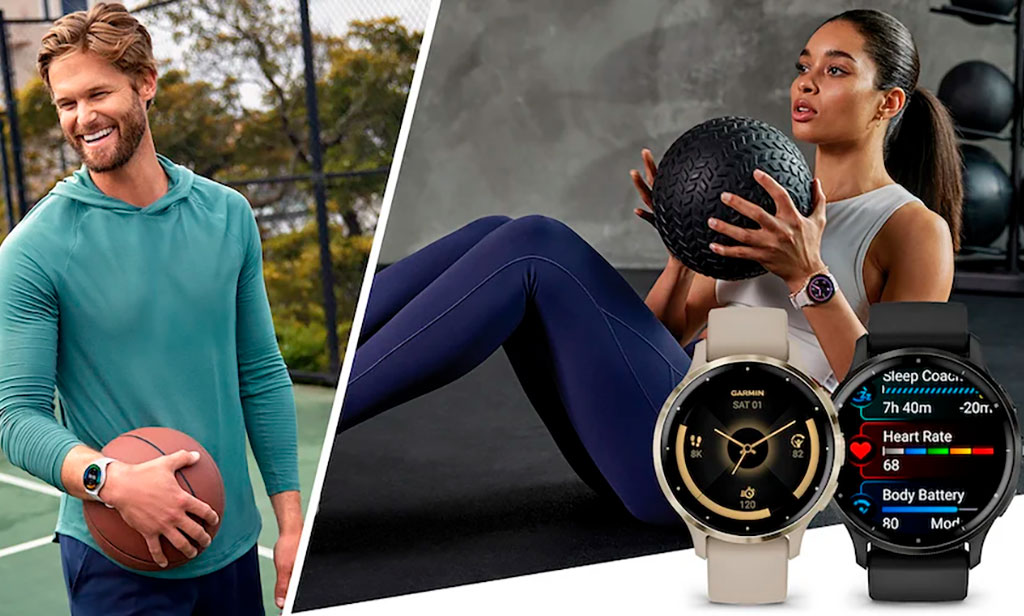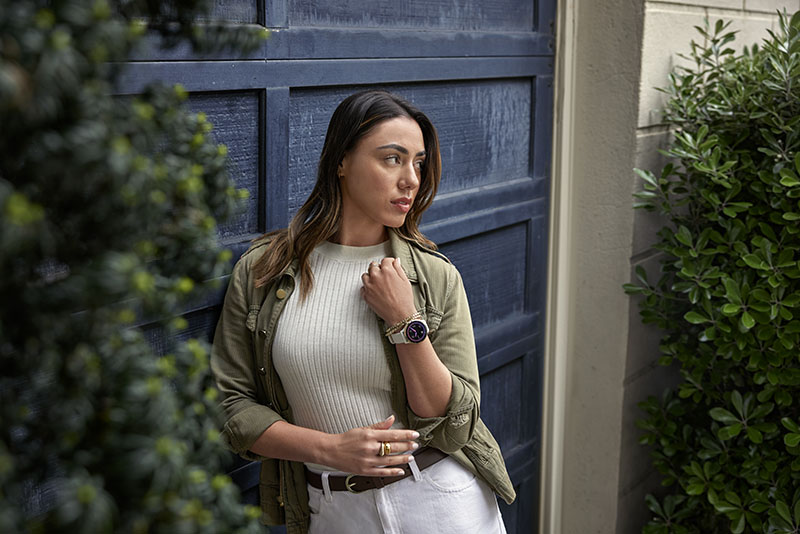Let’s be honest—we’re not all looking for the same thing in a smartwatch. Some of us want a serious training tool, something we can take on a trail run, to bed, and straight into the next HIIT session. Others? We’re juggling meetings, group chats, and meditation reminders. And somehow, the Garmin Venu 3 and Apple Watch Series 10 both claim to be “the one.” That’s what got us curious. Same promise, totally different execution.
We wore them both. Swapped wrists. Ran, biked, slept, forgot to charge them. And now we get it. The Venu 3 is an athlete’s loyal companion. The Series 10 is more like a personal assistant that happens to count your steps. They’re not just from different companies—they’re from different universes.
Still, they’re both fighting for your wrist. So let’s break it down. One by one.
Design choices that speak volumes

You know what’s weird? The moment you put either watch on, you already kind of know who it’s for. The Venu 3 is round, light, and almost modest in its look. It comes in 45mm and a smaller 41mm version (the Venu 3S), and the casing is plastic. That might sound like a downgrade, but it’s not—it makes it insanely comfortable for long runs or sleeping with it on. It’s not trying to make a statement. It’s trying to stay out of your way.
Now, the Apple Watch Series 10… it does not stay out of your way. Its rectangular shape is bold, unmistakably “Apple,” and available in 42mm and 46mm versions. It looks like a smartwatch. Period. The materials are higher-end—aluminum or stainless steel—and it can handle water up to 6 meters. So yes, it looks premium, but it doesn’t baby out of adventure either.
Navigation is also a tale of two philosophies. Garmin gives you three tactile buttons, which make so much sense during workouts when touchscreens fail. Apple stays sleek with its digital crown and a single side button, and leans hard on touchscreen fluidity.
So yeah, it’s form vs. function. Or rather, traditional vs. unmistakably tech-forward.
Straps: freedom vs. finesse
We didn’t think we’d care this much about watch bands—until we did. Garmin wins hands-down if you like playing dress-up with your gear. It uses a standard spring bar system, which means you can throw on any 22mm (or 18mm for the 3S) band you like. Leather, metal, nylon—you name it.
Apple, of course, does it their way. Their proprietary slide-and-click system is slick, secure, and satisfying—but yeah, it locks you into Apple’s band ecosystem. You’ll either pay more, or you’ll be searching for adapters. That said, Apple offers a ridiculous number of styles, from fluoroelastomer to woven nylon, so there’s still variety—if you’re willing to pay.
So if freedom of choice is your thing, Garmin gives you options. If luxury customization is more your vibe, Apple’s system looks and feels great.
Software: smooth sailing vs. sporty structure
This one’s not even close. Apple’s watchOS is in another league when it comes to interface. From animations to transitions, everything on the Series 10 just feels buttery. Clearing notifications, launching apps, swiping through widgets—it’s all fast, intuitive, and beautiful.
Garmin’s OS? Not bad, just… utilitarian. It’s built with training in mind, so it prioritizes clarity over flash. But yeah, no third-party apps, no tappable complications, and the UI sometimes feels a step behind. Notifications are there, but don’t expect deep interaction.
So if you want a smartwatch that works like an extension of your phone, the Apple Watch Series 10 is way ahead. Garmin works better as a performance monitor, not a productivity tool.
Health sensors: neck and neck, then Apple sprints ahead

Now here’s where things get a little tricky. Both watches are packed with sensors—heart rate, SpO2, ECG, skin temperature—the works. Garmin uses its Elevate Gen 5 optical heart rate sensor, which is great for steady activities and long-term tracking.
But when movement gets erratic? Or intensity spikes? Apple tends to deliver more consistent real-time data. And thanks to tighter integration with iOS, all of that data gets pulled into one cohesive story in the Health app.
So for the basics, both are solid. But if you care about deeper insights and better presentation, Apple pulls ahead.
Sleep: do you want numbers or advice?
Tracking sleep has become the quiet battleground of smartwatches. And both watches handle it well—but differently.
The Venu 3 offers detailed breakdowns plus recovery scores and comparative analysis. You don’t just see how long you slept—you get told if it was enough. It feels like a coach saying, “Hey, last night wasn’t great. Maybe cool it on the HIIT today?”
Apple? It tracks REM, deep, and light stages with impressive precision, but it doesn’t say much about what it means. You get clean data, beautifully presented—but no context. No advice. No nudge.
So if you want to understand your sleep, Garmin’s in your corner. But if you just want the data in perfect Apple style, Series 10 handles it elegantly.
GPS: solid enough for most of us

Neither of these watches uses dual-band GPS, which feels like a missed opportunity. But that said, for 99% of situations—city runs, suburban rides, forest hikes—they both perform reliably. Signal locks fast. Tracks stay consistent. Deviations are minimal.
If you’re expecting pinpoint precision on hairpin switchbacks or want exact pace during an ultramarathon, you’ll miss multi-band support. But for daily use? They’re both good enough.
Battery: Garmin makes Apple look ridiculous
Let’s just get this out of the way. The Venu 3 lasts around five days with regular use, and even more if you tweak settings. That means sleep tracking, workouts, notifications—all without thinking about a charger.
Apple? Different story. You’re plugging in daily. Every 24 hours, like clockwork. That’s just… a fact. The Series 10 charges fast, yes. You can get a full day in about 30 minutes, which is handy. But it still introduces friction—especially if you rely on it overnight or for long workouts.
Battery anxiety is real. Garmin makes it disappear.
Calls and independence: one can leave the phone behind
This is where Apple claws back some points. The Series 10 has a cellular option, which means you can leave your phone at home and still take calls, reply to messages, stream music, or use maps. It’s a second screen. And sometimes, it feels like your only screen.
Garmin’s Venu 3 can take calls and has a voice assistant—but it’s entirely tethered. No phone nearby? No go.
So if freedom matters—if you want to run without a phone—Apple wins big here.
Haptics and voice: Apple knows how to speak

Apple’s haptics are… satisfying. There’s no other word for it. Subtle but crisp, they actually feel like information—not just vibrations. Garmin’s, by comparison, is basic. Fine, but not memorable.
Voice commands? Siri is integrated and everywhere on the Series 10. From setting timers to sending messages to starting workouts, it just works. Garmin’s assistant is… fine. But more limited. Fewer commands, more basic responses.
Once again, Apple’s polish makes Garmin feel a step behind.
Watchfaces and personalization: dashboard vs. decoration
Apple just crushes this. Their watchfaces are customizable to the point of obsession. Tappable complications, color themes, widget stacks—if you can imagine it, you can probably build it.
Garmin’s are cleaner, more static. You can change colors and layout, but there’s little interaction. And it’s all locked into Garmin’s system—no outside developers making wild new options.
If your watchface is part of how you navigate your day, Apple makes that a playground.
Final take: it’s not even close—unless you’re training for something
Okay, we didn’t expect this going in. We figured it would be a close call. But after living with both, the Apple Watch Series 10 clearly offers more across the board—more polish, more power, more freedom.
The Garmin Venu 3 is excellent for what it’s built to do: track training, monitor sleep, last for days. It’s a focused tool, and it does that job beautifully.
But the Apple Watch? It’s not just a smartwatch—it’s a lifestyle manager. It handles workouts, but also messages, payments, apps, voice control, and everything in between.
So unless you’re laser-focused on training and battery life? There’s no real debate. The Series 10 gives you more. It might not last five days, but for what it offers in return? It doesn’t need to.


